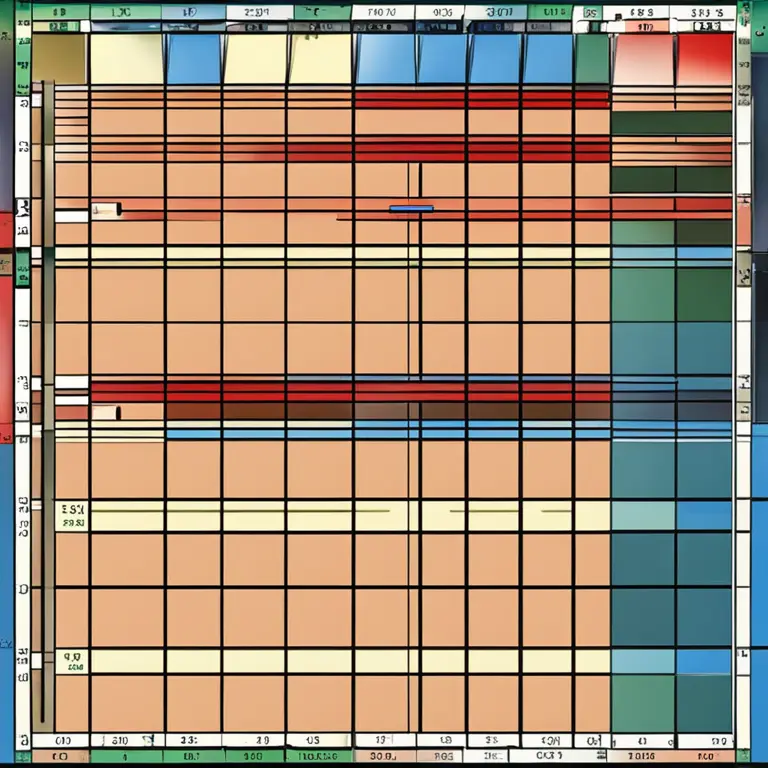
The Rhythms of Life: A Biorhythm Guide
Delve into the science of biorhythms to discover how our physical, emotional, and intellectual cycles shape our daily lives.
article by Adrian Wallace
Defining Biorhythms
Biorhythms are a complex theory suggesting that our daily lives are influenced by rhythmic biological cycles. These invisible ebbs and flows are believed to affect our physical, emotional, and intellectual capabilities. Originating in the 19th century, the concept has since intrigued those seeking to enhance their self-awareness and personal well-being. By charting these cycles, enthusiasts assert that individuals can anticipate periods of high performance and flag potential days of low energy or mood. However, while biorhythms have their advocates, they remain a topic of debate within the scientific community.

The Three Primary Cycles
Biorhythms are typically divided into three core cycles: Physical, Emotional, and Intellectual. The Physical cycle, said to last 23 days, influences our stamina, strength, and overall vitality. Following is the Emotional cycle, with a span of 28 days, thought to affect our moods, sensitivity, and mental state. The Intellectual cycle completes the triad with a 33-day period, allegedly overseeing our analytical abilities, memory, and communication. By synchronizing with these patterns, some claim we can optimize everyday decisions and interactions.

Calculating Your Biorhythms
To calculate one’s biorhythms, you must first know your birth date. Tools and calculators available online can then plot your personal biorhythmic chart. Aligning this information with current dates provides a personalized graph showcasing the peaks and troughs of your three cycles. Although it’s seen as a self-improvement or biofeedback tool by some, skeptics point out the lack of empirical evidence supporting the efficacy of such calculations and the use of biorhythm charts in predicting personal phenomena.

Biorhythms in the Digital Age
As we march into 2024 and beyond, digital advancements have made tracking biorhythms more accessible. A plethora of apps and software claim to not only track but also provide recommendations based on one's cycles. While some find benefits in this integration of ancient concepts with modern technology, it's essential for users to approach such tools with a critical mind, recognizing that correlation does not necessarily imply causation when it comes to biorhythmic patterns and life events.

The Skeptics' View
Biorhythms face skepticism, primarily due to a lack of rigorous scientific validation. Critics argue that the theory relies too heavily on anecdotal evidence and that its predictive power is no better than chance. Furthermore, any correlations found between biorhythms and daily life could fall under the psychological phenomenon known as the Forer effect, where individuals give high accuracy ratings to descriptions of their personality that supposedly are tailored specifically to them but are vague and general enough to apply to a wide range of people.
Using Biorhythms Responsibly
Irrespective of the debate, if you choose to explore biorhythms, it’s advisable to do so responsibly. Consider biorhythms as a supplementary guide rather than a deterministic map. Embrace the periods when you're supposedly at your peak, and on purportedly ‘off’ days, maintain a healthy skepticism and remember the power of the placebo effect. Using these cycles as gentle reminders rather than strict forecasts can empower rather than limit, blending self-reflection with a balanced perspective on one's personal and professional life.
The Future of Biorhythms
Looking to the future, biorhythms may find their niche in personalized wellness programs, mirroring the current trend of tailoring health and lifestyle advice to individual needs. As we deepen our understanding of human biology and psychology, there might be room to refine or even reinvent the concept of biorhythms, incorporating them within a broader, evidence-based framework for personal development and well-being.
Published: 1/30/2024
Modified: 1/30/2024
More predictions
Come back here soon to learn more about yourself and your future


The Rhythms Within: Mastering Biorhythm Readings
Discover how biorhythm readings provide insights into your physical, emotional, and intellectual cycles, helping you to align with your natural rhythms for improved well-being.


The Rhythms of Life: Delving into Human Biorhythms
Discover the fascinating world of human biorhythms and how they influence our daily lives, health, and well-being.


The Essentials of Biorhythms
Discover the basics of biorhythms, the cycles influencing your physical, emotional, and intellectual states, and what they mean for personal well-being.